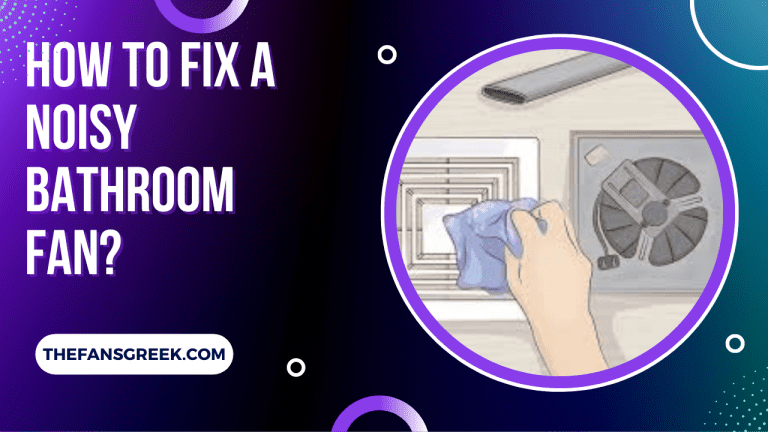Is It Bad To Run a Bathroom Fan All the Time?
If you have ever wondered if is it bad to run a bathroom fan all the time, you’re not alone. This is a question that we get asked a lot, and it’s one that we have been wondering about ourselves. After doing some research, we have come to the conclusion that it’s not necessarily bad to run a bathroom fan all the time, but there are some things you should keep in mind.
It is essential that the bathroom is clean and comfortable since we spend so much time there. Bathroom fans are great for keeping your bathroom fresh and free of odours and moisture. Is it possible to run it continuously?
Bathroom fans should not be run constantly due to the risk of the motor overheating, which could result in a fire. Additionally, leaving it running will cost more. Use a window (if possible) to circulate air instead of running the fan for approximately 20-30 minutes.
Throughout this article, we will cover how long you should run a bathroom fan, the dangers of leaving it on all the time, and some maintenance tips.
How Long Can You Safely Run a Bathroom Fan?
Starting with the basics: bathroom fans are used to ventilate humid air and odors that could be unpleasant for you or others.In addition, it contributes to maintaining the quality of indoor air.
Especially in small bathrooms, where the air does not dissipate effectively, moisture can corrode wall paint, furniture, and decor over time.
This problem can be solved by using bathroom fans, which remove moisture and odors from your home through ducts outside. To prevent mold and mildew, you might think it’s best to run the fan 24 hours a day, but that’s not the best plan.
Normally, bathroom fans should be switched off after 30 minutes. When you get out of the shower or bath, it takes half an hour for a small fan to clear the air. The fan shouldn’t be left on after the job is completed.
A fan that’s left on for an hour is unlikely to cause any problems. The motor will quickly wear out if left on all day and night. You’re also more likely to forget to remove it if you leave it on longer than 30 minutes.
Despite its design to run continuously, the bathroom fan motor isn’t designed for this purpose. In addition to being expensive, it can cause fires.
Let’s take a closer look at both points.
How Much Electricity Does a Bathroom Fan Use?
Do bathroom fans cost a lot to run? There are several factors to consider:
- The fan’s size.
- Run it for how long.
- In your state, the cost of electricity.
For a household of three, running a small fan periodically costs less than $5 per year. The situation changes, however, if it is run 24 hours a day, 365 days a year. You could spend upwards of $50 per year on a medium-sized fan running non-stop.
Electricity costs aren’t the only concern. If you have an air conditioner and heater in your bathroom, leaving them on all the time may affect your electricity costs.
As the fan pulls warm air out of your house during winter, the heating system will have to work harder to maintain the set temperature. When you turned on the AC during the summer, the same thing would happen.
This is a waste of money and the environment if you leave the fan running unless there are good reasons to do so.
However, there are a lot of bathroom exhaust fans that consume low electricity. Check them out here.
Can Leaving a Bathroom Fan on Cause a Fire?
What are the specific causes of bathroom fan fires? Dust and lint are collected in the fan as it suctions out the air, just as they are in the exhaust pipe of a dryer when it is sucking out the air. A dryer’s heating element can become dangerous if too much lint builds up near it.
It’s possible for a bathroom fan motor to become hot if it’s left running all day long, even if it doesn’t have a heating element. Lint stuck around the motor’s bearings and wire coils can cause a fire if the fan is left running. When lint or a nearby plastic component ignites, the motor will overheat, resulting in a fire.
The amount of lint that accumulates in your bathroom fan if you run it continuously will be higher than if you only use it occasionally. You shouldn’t panic, however. Cleaning your fan properly and regularly is the best way to avoid any accidents. Fortunately, there is no need to contact a professional. Self-cleaning is an option.
How To Clean a Bathroom Exhaust Fan
Clean your bathroom fan at least once every six to twelve months to ensure it works properly. Cleaning it more often will make it last longer. You can choose how thoroughly you want to clean, as long as you get rid of dust and lint.
To get started, follow these steps:
- Turn off the power for safety. Turn off the main breaker in the bathroom if you want to avoid electricity running while touching the fan.
- Remove and clean the vent cover. Take care to not damage any wires, screws, or springs while pulling it down. When you put everything back up, keep a mental note of how it was set up.
- Clean the vent cover with water and soap by scrubbing it with a sponge or brush. Microfiber towels can be used to dry it up.
- Clean the fan and motor with a small vacuum, including the blades. The remaining dust can be cleaned with a microfiber towel after most of the dust has been removed. Avoid breaking things by doing it gently.
- If you want to do a proper deep cleaning. The motor should be removed and cleaned. Don’t hesitate to consult a professional if you’re unsure.
- Lubricate the fan with a spray to ensure the fan spins effortlessly. This will also make the fan less noisy. If it drips, clean it up immediately. Spray the shaft with WD-40 Lubricant (available on Amazon.com).
- Put the vent cover back up. Don’t forget to cover the fan after cleaning!
An efficient and safer bathroom fan is one that has been cleaned. This can only be done a certain number of times. Replace your old bathroom fan with a new one if it is more than a decade old.
Conclusion
A bathroom fan could theoretically run continuously. However, that’s not a good idea in practice. In order to prevent odors and moisture from accumulating, you should turn it on only when you need it. You might want to consider replacing the fan if it isn’t performing well enough. Also, open a window whenever possible to help bring in the fresh air.


![My Bathroom Fan Won’t Turn Off [FIXED]](https://www.thefansgreeks.com/wp-content/uploads/2022/08/My-Bathroom-Fan-Wont-Turn-Off-768x432.png)

![Bathroom Fan Stopped Working (Won’t Turn On) [FIXED]](https://www.thefansgreeks.com/wp-content/uploads/2022/08/Bathroom-Fan-Stopped-Working-Wont-Turn-On-FIXED-768x432.png)
![Bathroom Exhaust Fan Not Pulling Air [FIXED]](https://www.thefansgreeks.com/wp-content/uploads/2022/08/Bathroom-Exhaust-Fan-Not-Pulling-Air-768x432.png)
